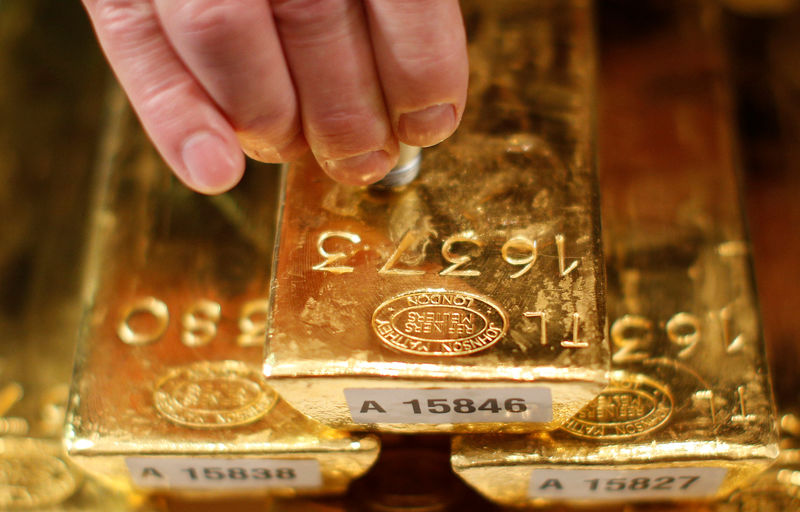Investing.com -- Gold prices found a bid at the lower end of their recent trading range on Wednesday, as weak retail sales data from the U.S. encouraged traders again to place bets on further interest rate cuts from the Federal Reserve, while Brexit talks between the EU and the U.K. failed to deliver a breakthrough that by now has been largely discounted.
By 10:50 AM ET (1450 GMT), gold futures for delivery on the Comex exchange were up 0.3% at $1,488.25 a troy ounce, while spot gold was up 0.2% at $1,484.27 an ounce.
Silver futures, however, extended recent losses, slipping 0.2% to $17.35 an ounce, while platinum futures also fell back 0.5% to $885.05 an ounce.
Gold is having to compete with safe-haven two-year Treasury yields over 1.6% again, as a result of optimism springing from last week’s apparent progress in de-escalating the trade dispute with China.
That means that real (i.e. inflation-adjusted) yields on two-year Treasuries are back to nearly 0%, and a more attractive bet than they were a couple of weeks ago.
However, analysts caution that that optimism may easily be exaggerated.
"Uncertainties about US-China relations were heightened, not lessened, by last Friday's ambiguous outcome,” Mary Lovely, a senior fellow at the Peterson Institute in Washington, D.C., said in a blog post Wednesday. “As easily as Lucy pulls the football away before Charlie Brown can kick it, the U.S.-China trade truce may evaporate into renewed recriminations, leaving U.S. companies facing even more policy-induced risks about the international business environment.”
Those uncertainties have held back business investment in the U.S. this year, leaving the economy largely dependent on the consumer. But even consumption appeared under threat on Wednesday, as the government said retail sales fell by 0.3% in September, their biggest drop since last November. Core sales, which strip out some more volatile elements, fell by 0.1%, their first drop in seven months.
According to Investing.com’s Fed Rate Monitor Tool, investors now see an 88% chance of a 25 basis point cut at the Fed’s policy meeting at the end of the month. Chicago Fed President Charles Evans encouraged such thinking Wednesday, saying: “We need to err on the side of providing aggressive enough accommodation to get inflation moving up with some momentum.”
